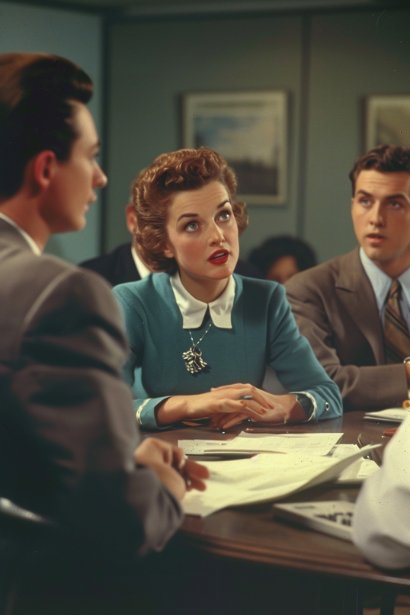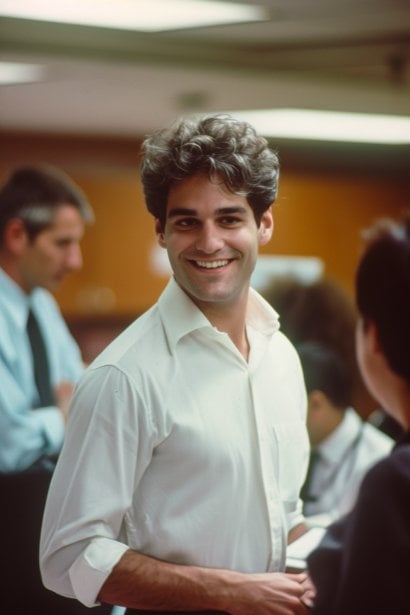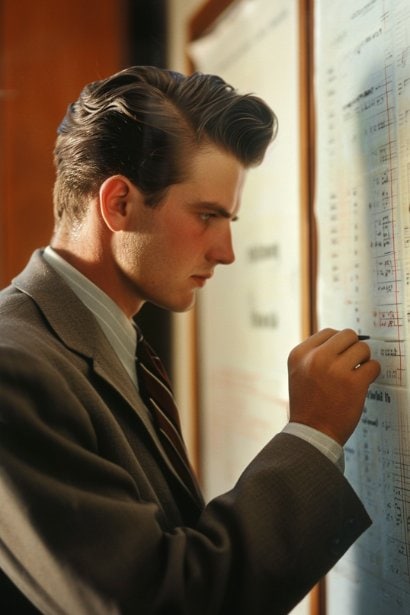How to Respond to Promotion Congratulations?

Receiving a congratulations message for a recent promotion is a heartwarming experience that signifies recognition and support from colleagues, friends, and family. It’s important to respond in a manner that expresses genuine gratitude and maintains the positive relationships that have contributed to one’s success. Crafting an appropriate response can vary depending on the sender, whether it’s a close colleague, a superior, or an acquaintance, but the core principle remains to acknowledge their goodwill politely and professionally.
In the workplace, recognizing the significance of these exchanges can have a lasting impact on professional relationships and future collaborations. The way one responds to a congratulations message for a promotion not only reflects their personal character but also their professionalism. It’s beneficial to consider the medium of communication, such as email or face-to-face, as each may require a different tone or level of formality. Keeping the response succinct and focused on appreciation promotes continued respect and goodwill with the other party.
Key Takeaways
- Expressing appreciation for congratulations on a promotion is both polite and professionally beneficial.
- The response should be tailored to the relationship with the sender and the communication medium.
- A thoughtful reply can reinforce professional relationships and support a successful transition in roles.
Understanding the Importance of Acknowledging Congratulations
When someone receives congratulations on a promotion, it’s vital to respond in a way that not only shows gratitude but also reinforces professional relationships and personal image.

Appreciating the Gesture
Acknowledging congratulations is a sign of appreciation for the person’s recognition of the achievement. A simple thank you can convey gratitude and respect for the time and effort taken to extend the congratulations. It’s important to add a personal touch to make the response feel genuine and heartfelt.
Building Professional Relationships
Responses to congratulations are opportunities to strengthen professional bonds. By expressing thanks, one shows that they value the support and goodwill of colleagues, which can foster ongoing collaboration and a positive work environment. Maintaining these relationships is crucial for future networking and career development.
Reflecting Your Personal Brand
How a person responds to congratulations reflects their professional demeanor and personal brand. A thoughtful acknowledgment can enhance one’s reputation as a gracious and humble professional. It’s a simple gesture that can have a lasting impact on how one is perceived within their industry and organization.
Crafting Your Response
When someone receives congratulations on a promotion, it’s crucial to acknowledge the gesture professionally. Selecting an appropriate format, penning a genuine thank you note, and choosing the right tone and length are key to crafting a considerate response.

Choosing the Right Format
One must decide whether to respond via email, handwritten note, or an online messaging platform. If the congratulations are received through a professional channel like LinkedIn, one should reply on the same platform. For a more personal touch, a handwritten note may be appropriate.
Writing a Thank You Note
A thank-you note should express gratitude and acknowledge the individual’s support. To convey appreciation:
- Start with a greeting: “Dear [Name],”
- Express thanks: “Thank you for the congratulations on my recent promotion.”
- Mention personal feelings: “I am truly honored by your support.”
- Close appropriately: “Sincerely, [Your Name]”
Thank-you notes should be sincere and directly address the person’s goodwill.
Deciding the Tone and Length
They should maintain a tone that is professional yet warm. A concise message often suffices, but they should ensure it is not so brief that it appears dismissive. A few well-considered sentences can effectively convey gratitude without being overly verbose.
Common Phrases and Expressions to Use
Responding to congratulations after a promotion involves expressing appreciation, acknowledging the support of others, and often sharing one’s aspirations. Crafting a suitable response can reinforce professional relationships and foster an atmosphere of mutual respect.

Expressing Gratitude
- Simple Thanks:
- “Thank you so much for your kind words.”
- “I really appreciate your message of congratulations.”
- Personalized Appreciation:
- “Your support has been invaluable; thank you for believing in me.”
- “I’m grateful for your encouragement throughout my journey.”
Acknowledging the Support
- Team Acknowledgement:
- “This achievement wouldn’t have been possible without my stellar team—thank you all!”
- “It takes a village, and I’ve had the best—thanks to everyone who’s been part of my career.”
- Mentorship Recognition:
- “I’m fortunate to have had mentors like you guiding me; thanks for the kind words.”
Sharing Future Aspirations
- Brief Aspirations:
- “Looking forward to tackling new challenges and continuing to grow.”
- “Excited about the opportunity to contribute even more in this new role.”
- Optimism for Collaboration:
- “I’m eager to see what we can achieve together in the future.”
Responding to Different Senders
When someone receives a promotion, the type of response to congratulations may vary depending on the relationship with the sender. It’s important to tailor each message to maintain respect, professionalism, or sincerity appropriate to the relationship.

Replying to Superiors
When a boss, manager, or supervisor offers congratulations, the reply should be formal and express gratitude. The employee might say:
- “Thank you for recognizing my efforts, I am eager to contribute to the team in my new role.”
- “I appreciate your support and guidance, which has been instrumental in my growth.”
Responding to Colleagues
Responses to colleagues should remain professional yet can be more relaxed. In replying, one might consider:
- “Thank you! I’m looking forward to working together in this new capacity.”
- “Your support means a lot. Let’s continue to achieve great results as a team.”
Messaging Friends and Family
Communications with friends and family can be informal and heartfelt. Replies may include:
- “Thanks so much! I’m excited to share this journey with you.”
- “Your encouragement has been a huge part of this. Let’s celebrate soon!“
Professional Communications with Business Associates
When responding to business associates, one should maintain a balance of cordiality and professionalism. Possible replies are:
- “I’m grateful for your congratulations. I look forward to fostering our ongoing business relationship.“
- “Thank you for your kind words. Building strong partnerships remains a top priority in my new role.”
Email-Specific Considerations
When crafting a response to promotion congratulations via email, it is imperative to consider the structure of the email, from the subject line to the body and the sign-off, to convey professionalism and gratitude.

Effective Subject Lines
A concise and clear subject line ensures that the recipient understands the email’s intent without opening it. Here are some subject line examples for responding to promotion congratulations:
- “Thank You for Your Congratulations!”
- “Appreciation for Your Kind Words on My Promotion”
The subject line serves as the first impression and should reflect both acknowledgment of the original message and the purpose of the reply.
Email Body Content
Within the email body, one should express sincere gratitude, possibly share credit with the team, and perhaps mention future endeavors or continual collaboration. Ensure that content is directly related to the congratulations received to maintain relevance. Here’s a structure to use:
- Greeting: Personalize with the sender’s name.
- Expression of Gratitude: Clearly state appreciation for the congratulations message.
- Acknowledgment of Others: If appropriate, mention the support from colleagues or mentors.
- Looking Forward: Briefly state a positive note about future work or ongoing projects.
Sign-Off Protocols
The conclusion of the email should be polite and professional. Common sign-offs include “Best regards,” “Sincerely,” or “Thank you again,” followed by the responder’s full name and possibly their new title. Below is an example:
- Thank you again,
[Your Full Name]
[Your New Position]
The choice of sign-off can reflect the nature of the professional relationship and should align with the overall tone of the email.
Adapting to the Workplace Culture
As one ascends to a new position within an organization, understanding and integrating into the prevailing workplace culture is crucial. They must recognize established norms and present themselves in a manner befitting their new role to navigate successfully.

Recognizing Organizational Norms
The onus is on the individual to observe and internalize the core values and expected behaviors that underpin the organization’s culture. This awareness is manifest in:
- Dress Code: Adherence to the company’s dress standards suggests respect and belonging.
- Communication Style: From emails to meetings, recognize the tone and formality that colleagues and leaders prefer.
One should scrutinize how decisions are made and what forms of initiative and collaboration are valued in the workplace. They should adjust their work style accordingly to ensure a smooth transition within the new job environment.
Representing Your New Role
Individuals in a new role need to:
- Exude Confidence: Convey assurance in their capabilities without arrogance.
- Embrace Leadership: They are often expected to lead projects or teams, setting an example through their work ethic.
A table mapping out key responsibilities versus the approach one might take can be helpful:
| Key Responsibilities | Approach |
|---|---|
| Managing a team | Encouraging open communication and regular feedback. |
| Project deadlines | Demonstrating strong time management and prioritization. |
| Strategic planning | Collaborating across departments to align with organizational goals. |
They are now more visible in the organization and must constantly be aware that they are setting the tone for their subordinates and peers, ensuring their actions always align with the values and objectives of the workplace.
Examples of Responses to Congratulations
When someone extends congratulations on a promotion, it’s both polite and gracious to acknowledge their good wishes with a suitable response. Below are several ways one can reply, from simple acknowledgment to heartfelt appreciation.

Brief Acknowledgments
- “Thank you!”
- “Much appreciated.”
- “I’m grateful for your support.”
These short responses are perfect for quick interactions or when one is amidst a busy schedule.
Personalized Responses
For a more personal touch, incorporating the encourager’s kindness into the response adds warmth.
- “Thank you, your encouragement means a lot to me.”
- “You are so sweet, thank you for thinking of me!”
Responses like these tend to create more meaningful connections.
Expressing Mutual Respect
Acknowledging the role others have played in one’s success can foster goodwill.
- “Thanks! It’s been a team effort, and I value your support.”
- “I really appreciate your good wishes. We’ve all worked hard for these achievements!”
By emphasizing teamwork, one shows humility and appreciation for the collective effort.
Looking Ahead
To demonstrate motivation and forward-thinking, one might focus on the future.
- “Thank you! I’m excited about the challenges ahead.”
- “Your support is encouraging as I step into this new role—thanks!”
This type of response conveys confidence and readiness for new responsibilities.
Maintaining Relationships Post-Promotion
A promotion is a milestone that brings new responsibilities and dynamics to one’s professional relationships. Staying connected with colleagues and managing evolving team roles are critical for a seamless transition.

Keeping in Touch with Colleagues
Effective communication is pivotal in maintaining relationships with co-workers post-promotion. One should schedule regular check-ins and share updates to foster an environment of mutual support.
- Weekly/Bi-weekly Check-ins: Schedule time to meet with peers.
- Further the Relationship: Ask about their projects and offer assistance.
- Mutual Growth: Share insights that may benefit their professional development.
Navigating Team Dynamics
Post-promotion, the relationship dynamics within a team can shift, necessitating a thoughtful approach to collaboration and leadership.
- Role Clarity: Clearly define the new roles and responsibilities to the team.
- Supervisor Interaction: Reinforce how one’s new role aligns with the team’s goals.
- Support Systems: Establish and clarify support systems for the team.
- Open Communication Channels: Ensure team members feel comfortable voicing concerns and ideas.
Tips for a Successful Transition
Transitioning to a higher role brings a new set of challenges and opportunities. It is important to approach this period with clear goals and a mindset open to learning and adaptation.

Handling New Responsibilities
When facing new responsibilities, an individual should start by assessing the scope of their new tasks. They can create a list to prioritize what needs immediate attention and what can be scheduled for a later time.
- Prioritization: Create a table with columns for task, deadline, and importance to organize and schedule tasks effectively.
| Task | Deadline | Importance |
|---|---|---|
| Project Handover | Week 1 | High |
| Team Meeting | Week 1 | Medium |
| Strategy Review | Month 1 | High |
- Delegation: They should identify tasks that can be delegated and make sure to allocate them to the correct team member, building trust and promoting teamwork.
Seeking Advice and Support
The individual must recognize the importance of seeking mentorship and advice from experienced colleagues.
- Mentorship: Finding a mentor within the organization can provide invaluable insights and support during this transition.
- Support Networks: They should also actively seek out support networks, which could include fellow managers or industry groups, as these can offer different perspectives and advice.
By tackling new responsibilities efficiently and seeking advice and support, the individual is more likely to succeed and grow into their promotion with confidence and effectiveness.
Conclusion
When someone receives congratulatory messages for a promotion, it is important to respond graciously. Acknowledging the well-wishes reflects good manners and maintains positive relationships within a professional network. Here are some key takeaways:
- Appreciation: Expressing gratitude is crucial. One should thank the sender for their message and acknowledge the time they took to reach out.
- Personalization: Adding a personal touch to the response can make the sender feel valued. A brief note on shared experiences or mutual goals can be effective.
- Brevity: Keep the response concise. A long message is unnecessary and may not be read in full.
- Positivity: Maintain a positive tone, as it reinforces a good image and reflects well on one’s professional demeanor.
| Do’s | Don’ts |
|---|---|
| Thank individuals for their congratulatory messages. | Overlook any messages. |
| Personalize the response where appropriate. | Send generic or impersonal replies. |
| Be brief and to the point. | Write lengthy or off-topic responses. |
One should always remember that their response to a congratulatory message is a reflection of their professional image. They must handle these interactions with the same level of professionalism that helped them secure their promotion in the first place.






